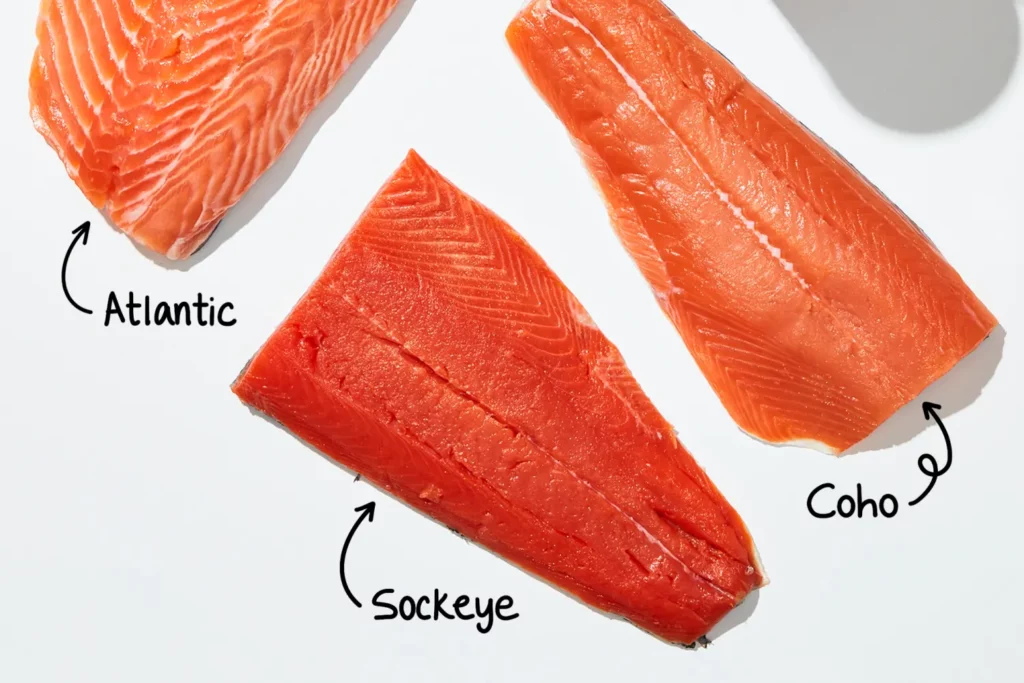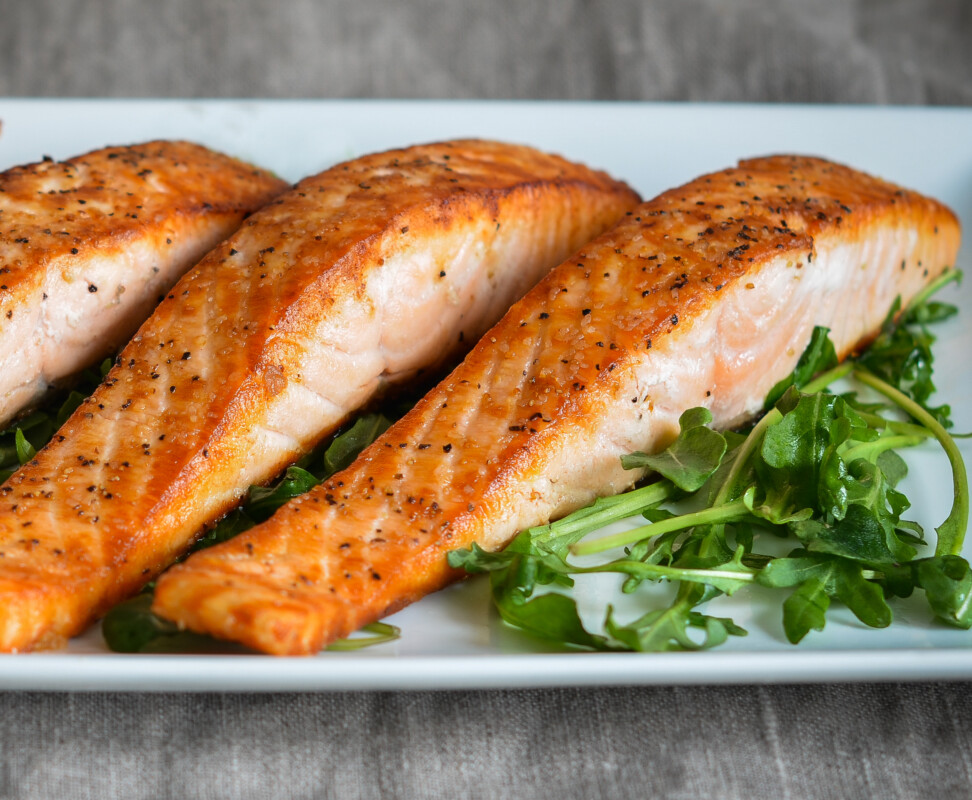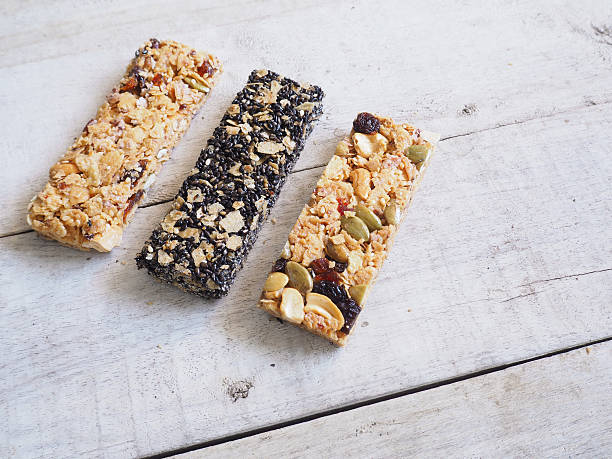What Does Salmon Taste Like?
Salmon is a beloved fish that graces dinner tables worldwide, but have you ever wondered, “What does salmon taste like?” This comprehensive guide will explore the unique flavor profile of salmon, its history, and how to make the most of this delicious and nutritious fish.
About Salmon
Salmon is a large, oily fish known for its rich flavor and vibrant color. Weighing up to 30 kilos and measuring more than a meter and a half in length, salmon is a powerhouse of taste and nutrition. Its thick, bluish-gray skin with silver belly and dark spots on the head and back makes it easily recognizable.
But what really sets salmon apart is its taste. Describing salmon’s flavor can be challenging due to its complexity and the many factors that influence it. Generally, salmon has a rich, oily taste that is both aromatic and distinctive. Understanding what salmon tastes like can help you appreciate this fish more and make informed choices when selecting and preparing it.
History of Eating Salmon
The consumption of salmon dates back centuries. Ancient Greeks and Romans were known to enjoy this fish, but it was the people of northern Europe who truly treasured it. Salmon was abundant in rivers until the 18th century, making it a staple food source for many cultures.
However, the construction of dams, pollution, and overfishing nearly led to the disappearance of wild salmon populations. Today, salmon farming has made this fish more accessible and affordable, allowing it to reach markets worldwide at lower prices.
Interestingly, in Spain, the first salmon of the season is highly prized and can fetch astronomical prices at auction. A 5-kilo piece can sell for up to 14,500 euros, highlighting the cultural significance and desirability of this fish.
Salmon Coloring
One of the most distinctive features of salmon is its color, which can range from orange to dark red. This vibrant hue is not just for show – it’s closely related to the fish’s flavor profile. Generally, the darker the color, the more intense the taste.
The coloring of salmon is influenced by its diet. In the wild, salmon get their characteristic pink or red color from eating krill and other small, pigment-rich crustaceans. Farmed salmon may have a slightly different color depending on their feed, but farmers often include pigments in the diet to mimic the natural coloration.
Understanding the color spectrum of salmon can help you choose the right fish for your palate:
- Lighter colored salmon typically has a milder taste
- Darker salmon tends to have a more robust, fuller flavor
It’s worth noting that young salmon actually have white meat, which changes color as they mature and consume more pigment-rich food.
Salmon Taste and Types

The taste of salmon can vary significantly depending on several factors, including:
- Fat content: Higher fat content generally means a more powerful taste
- Water temperature: Cold water increases fat content, leading to an oilier texture and more potent flavor
- Diet: Salmon that feed on smaller, saltier fish often have a richer taste
Let’s explore some of the most common types of salmon and their distinct flavor profiles:
Chum (Dog) Salmon
Chum salmon is ideal for those who prefer a milder fish taste. It has a lower fat content compared to other salmon species, resulting in a lighter flavor. This makes it perfect for recipes like curries or chowders, where you want the fish to complement rather than overpower other ingredients.
Pink Salmon
Pink salmon is the most common type found in the Pacific. It has a lower fat percentage and lighter-colored flesh compared to other salmon species. The taste is mild and delicate, making it a good choice for those new to eating salmon or who prefer subtler flavors.
Red Salmon
Also known as sockeye salmon, red salmon boasts a stronger taste, rich texture, and vivid red flesh. If you’re a fan of bold salmon flavor, this is the variety for you. Its intense taste makes it a popular choice for sushi and sashimi, where the pure flavor of the fish can shine.
King Salmon
King salmon, also called Chinook, is the largest salmon species in the world. Many consider it to have the best taste among all salmon varieties. While its flavor is intense, it’s less overpowering than red salmon. Ocean-caught king salmon is particularly prized for its full, complex flavor profile.
How to Cook Salmon
The cooking method you choose can significantly impact the taste of salmon. Here are some recommendations based on the type of salmon:
- Pink Salmon: Best when fried or roasted
- Red Salmon: Excellent for sushi and sashimi
- Atlantic Salmon: The most versatile, suitable for oven-baking, searing, pan-frying, grilling, or boiling
Regardless of the type, here are some general tips for cooking salmon:
- Don’t overcook: Salmon is best when it’s still slightly pink in the center
- Season lightly: The natural flavor of salmon is delicious, so don’t overpower it with too many seasonings
- Try different methods: Experiment with grilling, baking, poaching, and pan-searing to find your favorite
When prepared correctly, salmon can rival any high-quality steak in terms of flavor and satisfaction. This is one reason why salmon is often featured in gourmet restaurants and commands higher prices than many other fish.
Salmon Recipes
There are countless delicious ways to prepare salmon. Here are a few popular recipes to try:
- Mahogany Salmon Marinade
- Prosciutto Wrapped Salmon with Wilted Spinach & Lemon Beurre Blanc
- Fettuccine with Salmon & Asparagus in Lemon and Dill Oil
- Laxpudding: Swedish Salmon & Potatoes Bake
- Salmon Tomato Pasta (No Cream)
- Marinated Salmon with Wasabi-Cucumber Salad & Avocado Purée
These recipes showcase the versatility of salmon and how it can be paired with a variety of flavors and ingredients.
How to Make Salmon Taste Milder
If you find the taste of salmon too strong, there are several ways to make it milder:
- Soak in milk: Soaking salmon in milk for about 20 minutes before cooking can help reduce its fishy taste. The protein in milk binds to the compounds responsible for the strong odor, resulting in a sweeter, cleaner-tasting fish.
- Use citrus: Squeezing fresh lemon juice over cooked salmon can help mask any strong flavors and add freshness to the dish.
- Try different sauces: Experiment with sauces to complement and balance the salmon’s flavor. A brown sugar and honey glaze or a Greek yogurt and dill sauce can transform the taste of salmon.
- Remove the skin: The skin of salmon contains a lot of its oils and can contribute to a stronger taste. Removing it before cooking can result in a milder flavor.
Remember, the goal is to enhance the natural flavors of salmon, not to completely mask them. With these techniques, you can adjust the taste to suit your preferences while still enjoying the unique flavor of this nutritious fish.
How to Tell When Salmon is Bad
Ensuring the freshness of salmon is crucial for both taste and safety. Here are some signs that indicate salmon has gone bad:
- Age: Discard any leftover salmon that hasn’t been refrigerated properly or is older than 3 days.
- Eye cloudiness: In whole fish, clear eyes indicate freshness. Cloudy eyes suggest the fish was caught more than 5 days ago and may be starting to spoil.
- Ammonia smell: Fresh salmon should not have a strong odor. If you detect an ammonia-like smell, it’s a sign that the fish has begun to decompose.
- Slimy texture: A whitish, slimy film on the surface of the salmon indicates bacterial growth and spoilage.
- Color changes: If the salmon’s color looks dull or has dark spots, it may be past its prime.
To keep salmon fresh, store it in the coldest part of your refrigerator and use it within 1-2 days of purchase. If you’re not planning to use it soon, freeze it immediately.
Conclusion
So, what does salmon taste like? The answer is complex and depends on various factors, including the species, its diet, and how it’s prepared. Generally, salmon offers a rich, oily flavor with a distinctive aroma that sets it apart from other fish.
From the mild taste of chum salmon to the bold flavors of red salmon, there’s a salmon variety to suit every palate. By understanding the different types of salmon and how to prepare them, you can fully appreciate the unique taste profile of this popular fish.
Whether you’re a long-time salmon lover or just beginning to explore its flavors, there’s always something new to discover about this versatile and delicious fish. So why not pick up some salmon today and experience its rich, complex taste for yourself? With its numerous health benefits and culinary possibilities, salmon is sure to become a staple in your diet.






